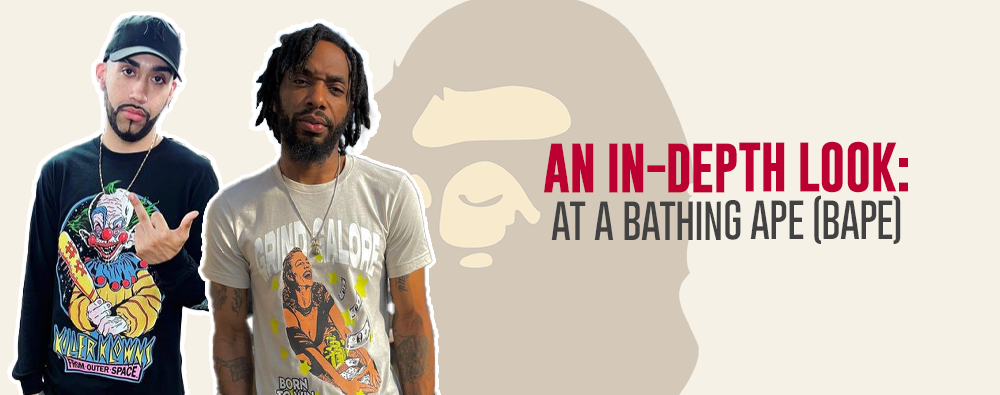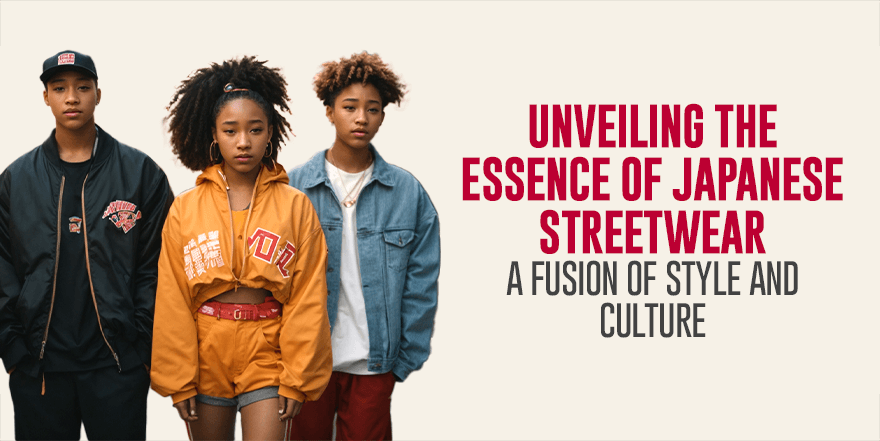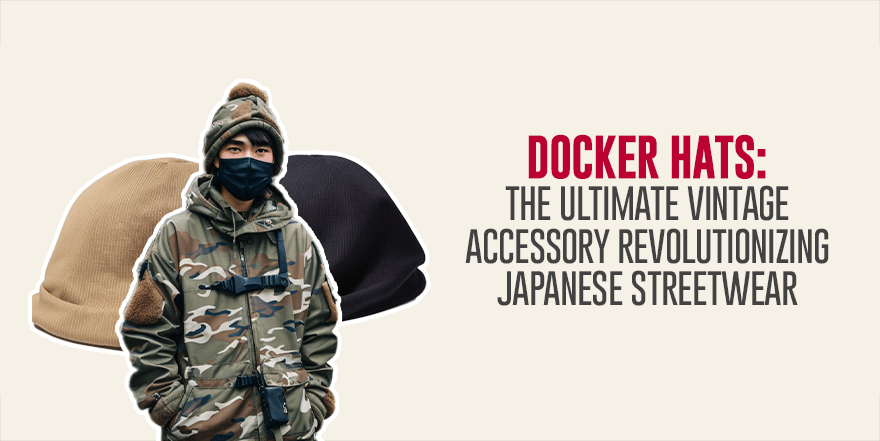Your Cart is Empty
BAPE is one of the most popular streetwear labels and has been for some time. The label aka A Bathing Ape, is in Chapter One when you first learn about this culture and begin your historical investigation. But as we've talked about extensively lately, streetwear has had an intriguing few years since it's become more popular.
In a time where music is essentially free and everything else is just a click away on the internet, youth have focused their attention (and their money) on fashion and clothing as a means of self-expression. Everyone from your 6-year-old cousin and to your law firm partner are becoming style conscious and in every major city across the globe you’re likely to see kids sporting box logos.

For someone new to the scene, it might appear as if this has always been the case. However, to comprehend the seismic changes the streetwear industry has undergone, one only needs to remember that just a few years ago, Supreme London had a select loyal clientele, in stark contrast to the daily queues seen today. This evolution isn't meant as a criticism. Instead, it highlights how streetwear has transformed, becoming more popular than ever.
However, amidst the hype, the decades-long history of this style movement can sometimes be overlooked, as in the case of A Bathing Ape. The brand has seen a resurgence in popularity, with youngsters keen to own clothing featuring the iconic BAPE camo pattern. But the rich history of the brand and its creator, Nigo, often seems to be forgotten.
While Supreme might dominate the weekly hype now, it's important to remember that it was A Bathing Ape that set the foundation for the model. This guide aims to take you through the history, hype, and frenzy surrounding one of the earliest "lifestyle brands" in streetwear – A Bathing Ape.
Like many Japanese streetwear legends, BAPE's origins can be traced back to the ura-Harajuku scene of the early '90s. Nigo, after working as an editor and stylist at Popeye magazine, established his store 'Nowhere' with Jun Takahashi of Undercover, and then partnered with Sk8thing to start his own clothing brand, A Bathing Ape.
Nigo, a well-known devotee of 20th-century popular culture, incorporated references to the Japanese proverb, "A bathing ape in lukewarm water," as well as the name and distinctive BAPE emblem into his love of the 1968 movie Planet of the Apes. The expression is used to describe someone who overindulges, like soaking in a bath till the water isn't even hot anymore, thus it was almost a playful allusion to the same hyper-consumptive youth who would later serve as the foundation of his business.

The store Nowhere became a pivotal part of the emerging ura-Harajuku scene, offering a blend of imported American street and sportswear and innovative Japanese streetwear labels. BAPE, along with other brands like Neighborhood and Hysteric Glamour, helped shape the "Urahara" style of the '90s.
Through connections to the International Stüssy Tribe and James Lavelle of UNKLE & Mo'Wax records, BAPE became known as a cultural tastemaker in Tokyo and a well-kept secret in international circles. Someone's friend would visit Japan, bring back some clothing and magazines, and the buzz would gradually spread through word of mouth.
Nigo started off on a shoestring budget and could only afford to create about 50 T-shirts a week, which may have been the original cause of BAPE's scarcity, but he also didn't like the concept of everyone wearing the same item.
By 1998, there were about 40 stores across Japan carrying the brand, but Nigo made the audacious decision to stop all wholesale business and concentrate all of his efforts on a single flagship store in Tokyo. The basic streetwear combination of hype, scarcity, and public spectacle was created, and it is possible that this was the beginning of the queue culture that we now know and love (or hate). Sales immediately eclipsed their previous levels.

The BAPE brand saw its most successful years from the late 1990s to the early 2000s, when its products quickly sold out in Japan and hip-hop culture, thanks in part to the support of fashion-forward celebrities like The Notorious B.I.G. Jacob the Jeweller introduced Nigo to Pharrell Williams in the early 2000s and recognized the two's comparable likes in jewelry commissions.
The brand received more attention in the United States thanks to Pharrell's popularity, who is recognized for his easy going demeanor and youthful free spirit. However, the brand was still hard to get in the country because there were no American retailers for BAPE.
The N*E*R*D frontman's Billionaire Boys Club & Ice Cream apparel lines, which Pharrell and Nigo collaborated on in 2005, became a cornerstone of millennial hip-hop fashion thanks to the flamboyant, frivolous, and enormous style of BAPE. New York and Los Angeles hosted BAPE's first global flagship stores in 2005 and 2006, while Kanye West created his own version of the company's prized Bapesta trainers.
Then, in 2007, Soulja Boy's infamous "Crank Dat" video with the statement "I got me some Bathin' Ape" was released. This video prominently featured Soulja Boy's own Bapestas, albeit their veracity has been questioned. That was it; BAPE officially entered the cultural zeitgeist and ascended to the throne as the ultimate example of ostentatious, showy streetwear.
Though the BAPE tale would be incomplete without the brand's spectacular climb to success in the United States, the brand's sudden recognition came with a slew of issues. Product scarcity in the United States, along with BAPE's relatively high costs for young Western consumers, resulted in the growth of counterfeit products, overwhelming the market before the brand could find its footing. BAPE's quick popularity meant that it became more of a fad or fleeting trend than the slow and carefully maintained excitement that it had built in Japan.
By 2010, the brand had gone out of favor, and it was revealed that A Bathing Ape was in debt to the tune of almost 2.5 billion yen ($22.5 million). Nigo stepped down as CEO, and the brand was sold to Hong Kong fashion conglomerate I.T in 2011 for a pittance of $2.8 million. Nigo stayed with the firm for the next two years to help with the transition, founding his own vintage-inspired label Human Made and taking on a new role as Creative Director of Uniqlo's 'UT' T-shirt line.
BAPE has settled as a mainstay label of contemporary streetwear since its acquisition by I.T; though the brand is no longer as scarce and unpredictable as it once was, its legacy as one of the original streetwear icons, as well as its deep connections in hip-hop and street culture, has seen the brand endure with a much broader audience.
BAPE's famous camo is now one of the most prevalent designs of current street style, while once-coveted rarities like shark hoodies and insulated snow jackets have become essential pieces every season. Many of the elder heads believe that the BAPE of today bears little resemblance to its forefathers, but whether this is a good or bad thing is, ultimately, a question of opinion. In many ways, it's still the same brand it's always been, defined by its young, consumptive audience's eager desire for anything on offer.

There are very few BAPE debates that do not include the crucial question of why BAPE is so pricey. The thing is, there's a long list of reasons behind the pricing structure of many Japanese brands; higher quality standards, better healthcare and wages for Japanese manufacturers, a consumer perception in Japan that a good product is worth having and paying the price for, and so on.
The thing about BAPE, at least these days, is that none of that is true. The majority of the goods are manufactured in China. The quality, while still good in comparison to your usual mall brand, is nothing extraordinary. In terms of reputation in Japan, BAPE is far from extraordinary. It is, in reality,
So, why is BAPE so pricey? Take a seat for the revelation: because it simply is. Do you remember what the name means? Youth who are smug and self-indulgent? Ding, ding, ding, ding. BAPE is pricey because it is an expensive brand for kids with too much money, and its sarcastic handling of its customers has turned out to be one of its major draws.
Of course, a premium brand must demand premium prices in order to keep the customer's perception of it, but there isn't much else to BAPE. Bapesta's 'patent leather' trainers were frequently made of plastic and cracked and chipped after only a few wears. T-shirts, which were once considered a cut above, are now considered commonplace.
Along with the Bapesta, camo outerwear, and renowned lifestyle pieces, the BAPE Shark hoodie is one of the most iconic outfits in A Bathing Ape history. When it first debuted in 2004, its crazy design and abundance of distinctive elements emphasized the image of BAPE as giving something you couldn't get anywhere else. It was a perfect blend of current style and quirky gimmicks that ensured anyone wearing it was bound to turn heads, and, like Supreme's own super-hyped box logo hoodies, was distinguished by scarcity and various iterations that ensured anyone who bought one felt like they were getting their own little piece of exclusivity.
The hoodie's distinctive shark motif on the hood is inspired by military artwork that would be found on the noses of fighter jets or even the hulls of battleships. The distinctive tiger 'a' symbol clearly represents A Bathing Ape, while the accompanying 'WGM' chenille varsity patches represent 'World Gone Mad,' and the full-zip hood feature was a somewhat unusual feature at the time, opening up the Shark Hoodie to all sorts of edgy and unique photo opportunities. While the initial BAPE Shark hoodie was a plain block color with a half-woodland camo hood, later variants would integrate various Bape insignias, such as BAPE Camo, the Bapesta Star, and the brand's unique plaid pattern.
Though the BAPE Shark Hoodie is easier to find now than it was when it was originally released, it remains a sought-after piece of streetwear history for a variety of reasons. For starters, it's so distinct that everyone "in the know" who sees it quickly recognizes it. Second, they're pricey as hell, averaging approximately $300 retail, which, when combined with the first reason, makes it incredibly enticing to the streetwear community's love of letting other grown men in the street know how much money they spent on an item of apparel from just a glance.

Also known as the ‘Cloud Camo’, the iconic BAPE Camo print is perhaps the most fascinating element of the brand, as a graphic that has totally transcended streetwear to become one of the most iconic motifs of the past two decades.
The graphic blends a number of different elements in its design; firstly, its obvious reference to military camouflage fits perfectly with the Japanese (and entire fashion world) fascination with military clothing. Where camouflage is traditionally designed to conceal and hide, however, the BAPE camo manages to flip the script and become something that you just can’t ignore.
Second, BAPE camo, with its blobby, "hyper flat" style inspired by traditional duck-hunting camouflage, brings to life the glossy, cartoon-esque, joyful, and fantasy element of Japanese fashion without being cheesy or corny. Tokyo is the birthplace of Hello Kitty, anime, collectible dolls, and kawaii culture, and that splodgy, super-smooth aesthetic clearly reflects that. It makes military appear less serious, and irreverence appear more dignified.
Third, and maybe most intriguingly, examine BAPE camo in the context of Nigo's idol, Andy Warhol. The way Nigo has plastered BAPE camo in blue, pink, red, and green onto any surface he can get his hands on is very high-meets-low culture, much as Andy Warhol intended to convert daily, mass-manufactured culture into a piece of art.
BAPE has developed its own-brand fishing gear, transformers, dolls, condoms, and even toilet paper throughout the years, but once an object is camouflaged, it is no longer just an object. It's called BAPE. Seriously, how many people do you believe took that BAPE toilet paper home and used it? And how many do you think are still sitting on a shelf? Now that’s real power if you ask me.
The debut of a BAPE camo rendition of Adidas' instant sell-out NMD silhouette rekindled the BAPE sneaker craze, but there's a lot more to BAPE x Adidas Originals than meets the eye.
The concept for a partnership first arose in the early 2000s, when Nigo was introduced to Adidas brand consultant and Adidas Spezial founder Gary Aspden by Stone Roses frontman and BAPE chief Ian Brown.
Nigo and Aspden collaborated closely with famous Japanese designer Kazuki Kuraishi to create four 'Super Ape Star' versions that merged important BAPE emblems and elements into the legendary Adidas Superstar silhouette. This was followed by four mid-top 'Super Ape Skate' silhouettes that reignited the buzz.
The brands would not meet again until 2011, but the significance of the inaugural BAPE x Adidas Originals offerings should not be overlooked. The concept of a sportswear brand cooperating with anyone other than an athlete was nearly unheard of in the West in 2003. adidas Originals, which debuted in 2001, dared to collaborate with another brand under the powerful tagline 'The Respect is Mutual' and achieve something radically different.
BAPE x Adidas was the perfect bet, based on everything that has happened in the years thereafter.

Nigo's sale of BAPE to I.T in 2011 marked the end of an era in streetwear. Fortunately, Nigo didn't stay idle for long before embarking on new adventures. Despite working as a Creative Director for the company for two years, he swiftly started his separate brand, Human Made. Human Made saw Nigo collaborate with Japanese reproduction specialists Warehouse Japan to create high-quality apparel inspired by actual pieces from Nigo's library, drawing on Nigo's passion for classic American workwear.
Compared to the bright, poppy, futuristic aesthetic of BAPE, the brand was a stark departure from his previous output, but some signs of his influence remained – a number of graphics were designed by long-time Nigo collaborator (and C.E founder) Sk8thing, the BAPE logo featured an ape’s face, and interior labels even featured a line from a Planet of the Apes film: ‘You are scientifically advanced but there remains a question as to how civilized.’ Oh, and it’s really fucking expensive, so that hasn’t changed.
The brand was a stark departure from his previous output, but some signs of his influence remained - a number of graphics were designed by long-time Nigo collaborator (and C.E founder) Sk8thing, the BAPE logo featured an ape's face, and interior labels even featured a line from a Planet of the Apes film: 'You are scientifically advanced, but there remains a question as to how civilized.' Oh, and it's still really, really expensive.
Comments will be approved before showing up.
By Credit & Debit Cards, Paypal or Apple Pay
For all orders over $100
We're available 7 days a week
Reply within 24 hours
Not loving it?
Free return within 30 days


